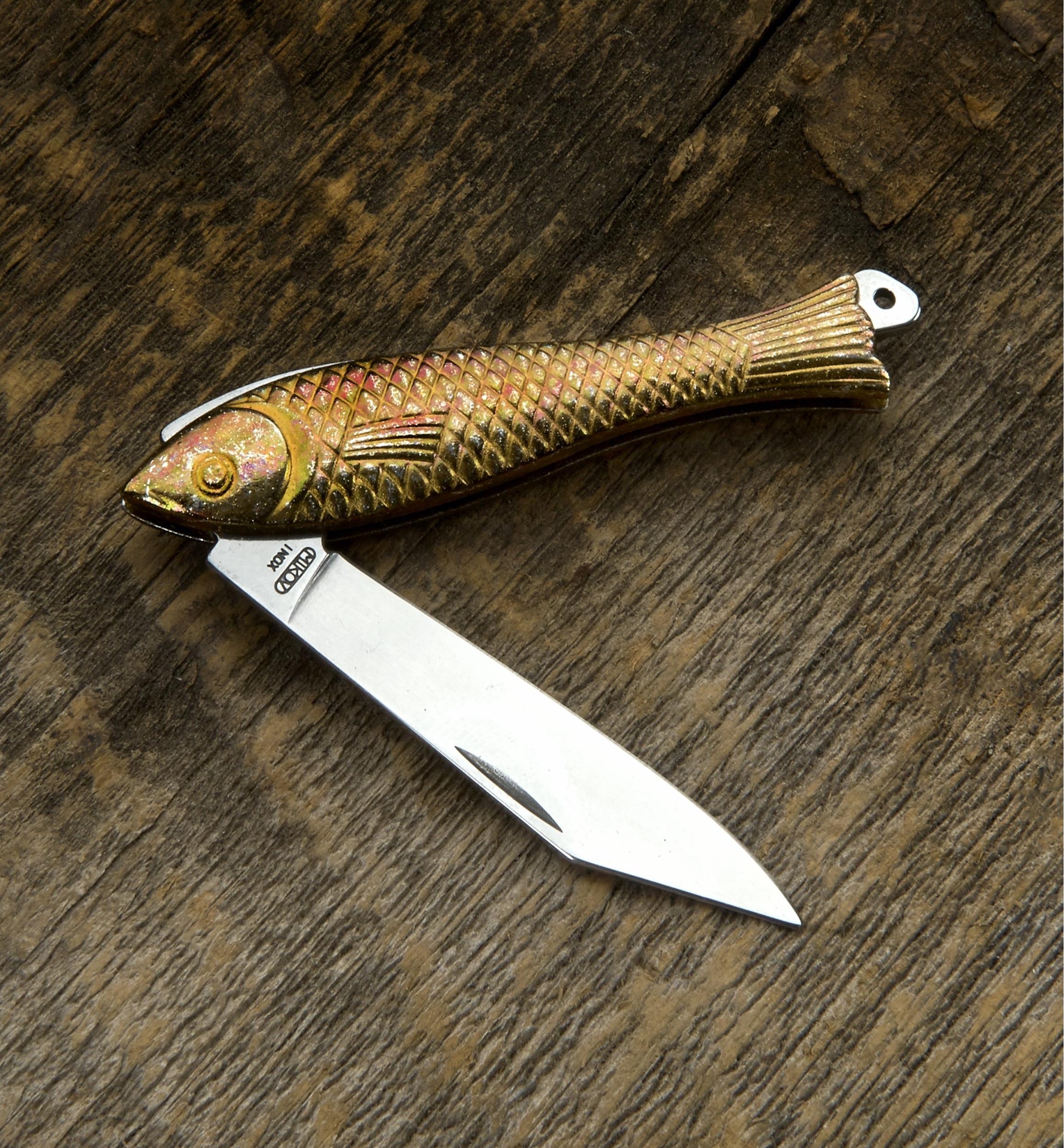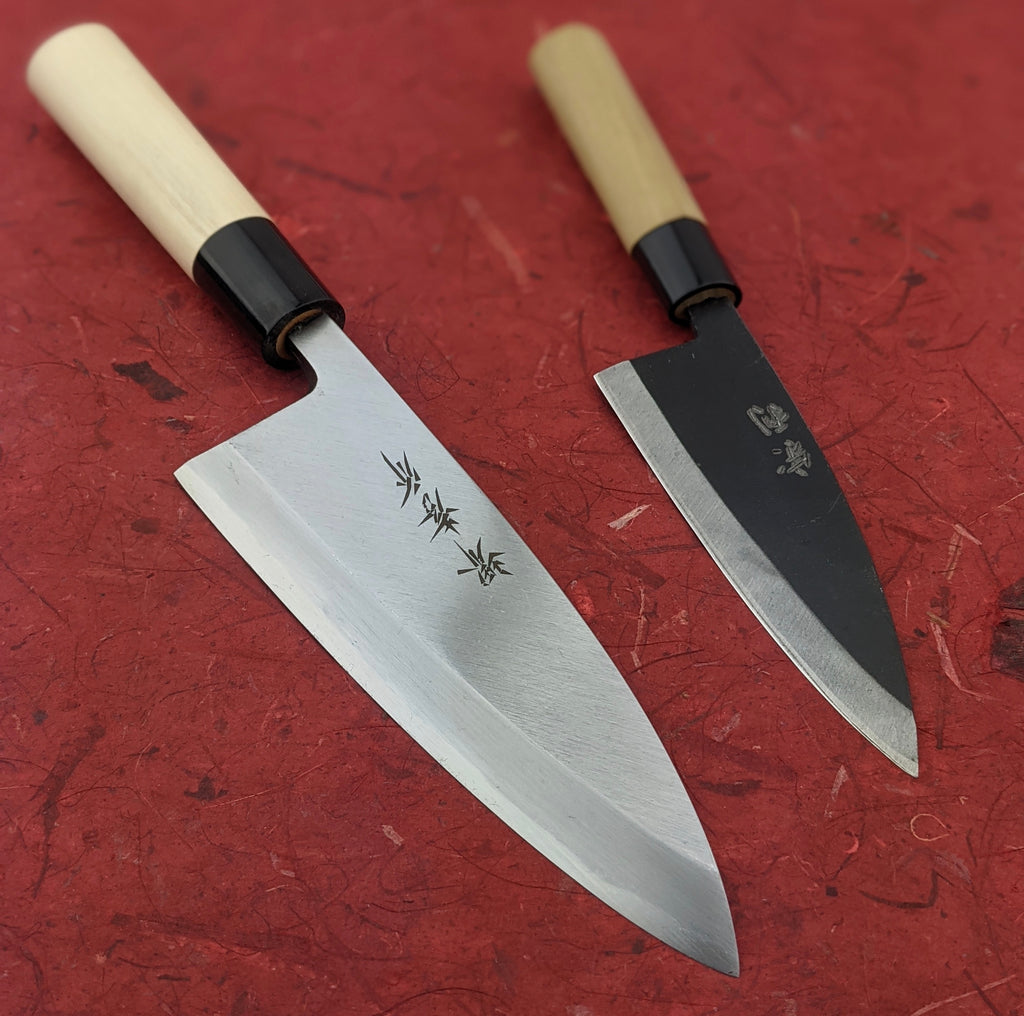The Ultimate Guide to Preserving Your Fish Knife for Durability and Efficiency
Preserving a fish knife is necessary for guaranteeing its long life and optimum efficiency. Correct care involves a series of actions, consisting of cleansing, honing, and storage. Each phase contributes to the knife's effectiveness during usage. Comprehending these techniques can make a significant difference in the life-span of this vital tool. Lots of individuals neglect critical facets of upkeep that can lead to wear and tear. What are these often-forgotten steps?
Picking the Right Fish Knife for Your Requirements
When selecting the ideal fish knife, what trick functions should one consider? The blade's versatility is critical, permitting for accuracy while filleting various fish types (fish knife). A thin, slim blade frequently boosts maneuverability, making it easier to browse around bones and skin. The material of the blade likewise plays an essential duty; stainless steel supplies sturdiness and corrosion resistance, necessary for frequent exposure to water
In addition, the deal with's layout ought to not be forgotten. It ought to supply a comfortable hold, preferably featuring non-slip products that make certain security throughout use. The knife's size is one more factor; shorter blades can supply much better control, while longer blades may be valuable for larger fish. Weight is important; a well-balanced knife enables for extended usage without tiredness. By thoroughly taking into consideration these features, one can choose a fish knife that satisfies specific needs for efficient fish prep work.
Appropriate Cleansing Techniques After Each Usage
Proper cleansing strategies after each usage are essential for maintaining the longevity and performance of a fish knife. Right away after filleting fish, it is vital to wash the knife under cozy water to get rid of ranges, sludge, and any kind of residual fish juices. Utilizing a soft sponge or fabric, the individual must delicately scrub the blade and manage, paying special focus to any type of gaps where particles might gather. Stay clear of making use of rough materials that could scratch the blade's surface area. After cleaning, the knife must be completely dried with a tidy towel to avoid moisture-related damages. Using a food-safe mineral oil regularly can help keep its stability if the knife has a wooden take care of. Keeping the knife in a designated sheath or magnetic strip can better secure it from unexpected damage and guarantee it remains all set and clean for future usage. Consistent adherence to these cleansing practices will improve the knife's lifespan and efficiency.
Developing Your Fish Knife: Tools and Approaches
Sharpening a fish knife is an important process that improves its performance and makes sure clean cuts while filleting. To accomplish optimum sharpness, numerous tools can be utilized. A whetstone is considered one of one of the most effective approaches, allowing for specific control over the sharpening angle. Individuals need to wet the rock and keep a consistent 20-degree angle while gliding the blade throughout its surface.
A honing rod can be used for regular maintenance, realigning the blade's side without removing material. For convenience, electrical sharpeners provide a quick option, though they might not provide the same level of finesse as hand-operated approaches.
No matter the chosen method, it is vital to completed with a leather strop to polish the side, making certain a knifelike finish. Normal honing not only lengthens the life of the fish knife but likewise enhances the overall performance of the filleting process.
Keeping Your Fish Knife for Optimum Protection
After sharpening a fish knife, focus should transform to its storage space to keep the blade's integrity and performance. Proper storage is important for protecting against damage, dulling, and rust. Ideally, a fish knife ought to be stored in a safety sheath or knife roll, which guards the blade from contact with ecological variables and various other utensils (fish knife). Magnetic strips can also work, enabling secure and obtainable storage while maintaining the blade you could try these out safe and secure

Routine Maintenance Regimens to Comply With
A consistent maintenance routine is necessary for preserving the functionality and appearance of a fish knife. Routine cleaning after each use is essential; washing the blade with cozy water and mild soap removes any kind of residue. It is a good idea to dry the knife thoroughly to stop corrosion. Periodically, a light application of food-safe mineral oil can aid safeguard the blade and keep its shine.

Saving the fish knife in a safety instance or sheath prevents unintentional damages and keeps it prepared for usage. Adhering to these maintenance routines will substantially boost the long life and effectiveness of the fish knife.
Regularly Asked Inquiries
Can I Utilize My Fish Knife for Other Sorts Of Fish?
Yes, a fish knife can be made use of for other types of fish. Nevertheless, the performance might vary depending upon the knife's design and the particular fish being refined, influencing effectiveness and precision throughout prep work.
What Products Are Ideal for a Fish Knife Blade?
Stainless-steel and high-carbon steel are thought about the see this here ideal materials for a fish knife blade. Stainless-steel provides deterioration resistance, while high-carbon steel offers premium sharpness and side retention, vital for efficient fish preparation.
Just how Frequently Should I Change My Fish Knife?
A fish knife should usually be replaced every three to 5 years, depending on usage and upkeep. Normal evaluation for indications of wear or damages can additionally help figure out the correct time for replacement.
Are There Details Brands Understood for High Quality Fish Blades?
Particular brands, like Wüsthof, Victorinox, and Rapala, are renowned for creating top notch fish blades. These brands are identified for their durability, sharpness, and ergonomic designs, making them favored options among fishing lovers and specialists alike.
Can Temperature Level Influence My Fish Knife's Efficiency?
Temperature level can significantly affect a fish knife's efficiency. Severe warmth might trigger blade products to warp, while chilly problems can cause brittleness. Maintaining an optimal temperature is important for useful source protecting the knife's functionality and resilience.
The knife's length is another factor; much shorter blades can supply much better control, while longer blades may be useful for larger fish. Instantly after filleting fish, it is essential to rinse the knife under cozy water to eliminate scales, slime, and any kind of recurring fish juices. After sharpening a fish knife, attention must transform to its storage space to preserve the blade's integrity and efficiency. Preferably, a fish knife ought to be stored in a safety sheath or knife roll, which shields the blade from contact with various other tools and ecological aspects. Yes, a fish knife can be made use of for various other types of fish.